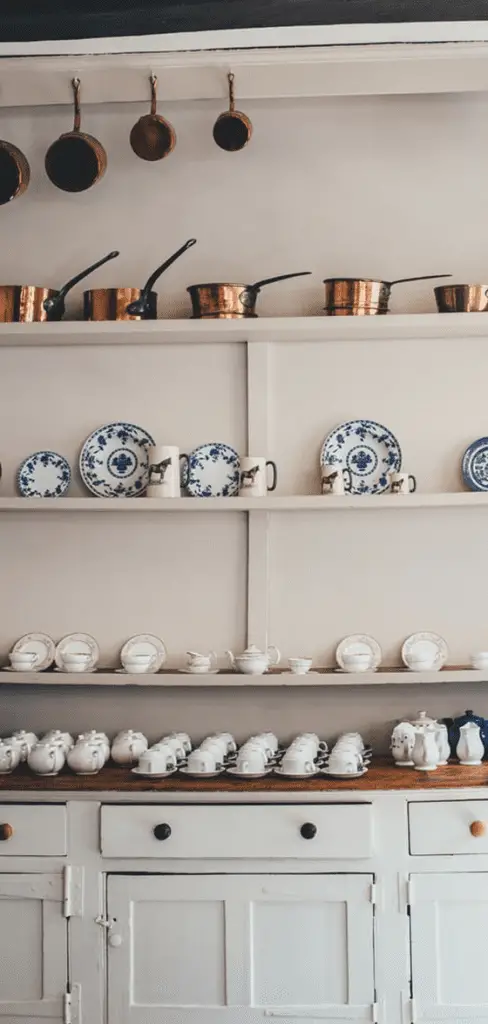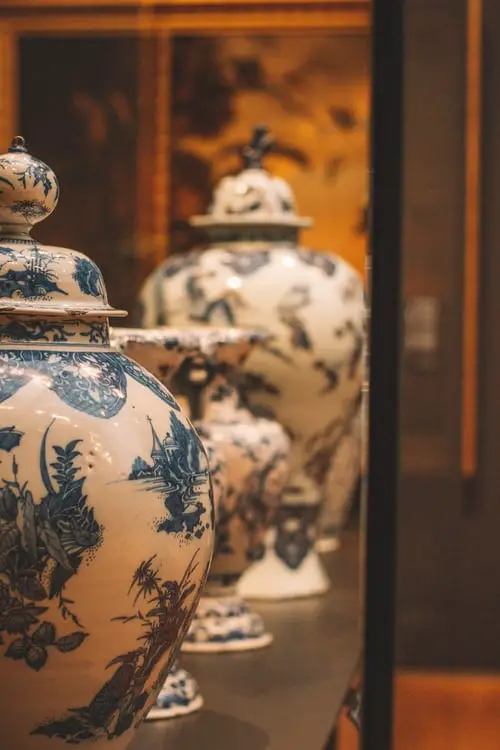Blue and white porcelain is one of the most intriguing genres of vessels you can find today. The reason is that it has a real charm that traces back to ancient times. Today, you can still find relics as well as modern porcelain made of blue and white, both with a similar elegance. You have to dig deep into the history books to understand where all the attractiveness really stems from. Let’s take a look at the roots of these amazing blue objects.
The History of Blue and White Porcelain
The origin of blue and white porcelain goes back to 9th century China. Back then, China was reigned by the Tang Dynasty. During this time, blue and white porcelain started becoming popular. But, evidence suggests that it started being used much before that. The potters from Basra, Iran, are said to be the ones who used it first. They used it as a decorative item. Note that the Basra potters come from the pre-Mesopotamian era.
But, ever since they started appearing in China, it began a journey across the world. Slowly, it crossed borders and spread across the world.


Blue and White Porcelain and the World
The Chinese Blue and White porcelain took its steps across the world slowly after the 12th and 13th centuries. The ruling dynasties in Korea were fond of the aesthetic appeal in it. Hence, they supported artisans who prepared it. It flourished during the Joseon Dynasty which held the throne from 14th to 19th century.
Next, these beautiful blue objects traveled o the Vietnamese ports in the 15th century. It traveled as a part of the trade, and even the local potters picked up the tricks soon.
Meanwhile, the Persian pottery had a highly evolved working methodology. They made blue and white pottery in the arabesque category. They even went on o inspire Chinese potteries. It was during the late 15h century that famous artists like Kütahya and Iznik introduced their version of blue and white porcelain vessels. They retained the salient feature of cobalt. But they added turquoise to the clay mixture to give it an extra charm.
Slowly, the style got followers, and before long, spread to Central Asia. It gained immense popularity in the porcelain capital, the Ottoman empire. This spanned across Istanbul, Bursa, and Adana. In fact, the Ottoman Emperors were passionate collectors of porcelain works.
Famous writer, John Alexander Pope even wrote a book on the same, ‘Fourteenth Century Blue and White’. In the book, he says he found over 10,000 unique blue and white porcelain. All of this was from the 16th to 18th century, under the Ottoman rule. One can see many of these objects in the Topkapi Palace Museum, Istanbul.
In India, blue and white porcelain became popular in the 18th century. There are many ragmala paintings from that period to suggest the same.
In Europe
Europe was not behind in this either. Maria Theresa, the Empress of the Habsburg dynasty in the 18th century was a passionate collector of blue and white porcelain. Accounts say that her palace walls were covered in blue and white porcelain paintings. So the room was named the Porcelain room. Further, she had many other places to keep these blue objects. Chinese blue and white vases dominated her palace rooms. These were some of her favorite objects too.
This is just a testimony to the popularity of blue and white porcelain in medieval Europe. One can find several such places featuring blue and white porcelain.

Why are Blue and White Porcelain Popular?
China was key to popularizing the concept of blue and white porcelain across the world. In fact, the term ‘China’ is synonymous with porcelain in some usages. The admiration for these charming blue objects remained constant throughout the years. They stand for craftsmanship and art that stands the test of time.
Since importing high-quality porcelain was a difficult task, not everyone could access it. So, they started producing their own blue and white porcelain. For instance, Europeans began their attempt to bring China-like quality to the blue and white pottery they made. They had a great pool of resources to draw inspiration from. This made their jobs easier. They gained popularity and still are no less popular either. The cool blue and neutral white combination still hold people in their tracks.
How to identify Real Blue and White Porcelain?
Are you someone with limited knowledge or less experience handling blue and white porcelain? If so, you may face difficulty identifying the real material. Unless you have considerable experience selecting or collecting these blue objects, you may find it difficult to recognize authentic pieces.
The Nanking from the late 18th century was the finest quality of blue and white porcelain ever made. But ironically, Chinese porcelain did not match its quality.
To identify an authentic piece, a collector first looks into the composition of the vessel’s body. Some of the blue and white porcelain was made of bone china. Meanwhile, fewer pieces were made out of porcelain and stone china. The second most important factor is quality. Check how fine or coarse the prints are. See if they are smudged and see how fine the engravings are. Further, you should check for the presence of spur marks due to the handling of fine wire spurs within the kilns. You can find these on the face of the plates.
Next, you should look for glaze, decoration, footing, and design. It is something that you learn from the experience of handling porcelain. In later periods, Chinese porcelain had no marks, unlike the old times. Back then, every blue and white porcelain bore the emperor’s logo.
Conclusion
The blue and white porcelain is a captivating object, no matter when it was made. It has a specialty about it that separates it from the rest of the pottery. And this factor is recognized by millions across the world who admire its elegance. It continues to be one of the most attractive blue objects to have existed.



